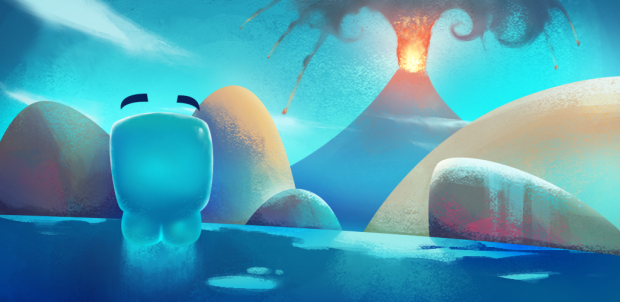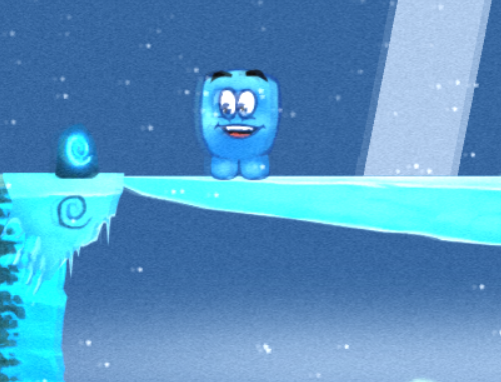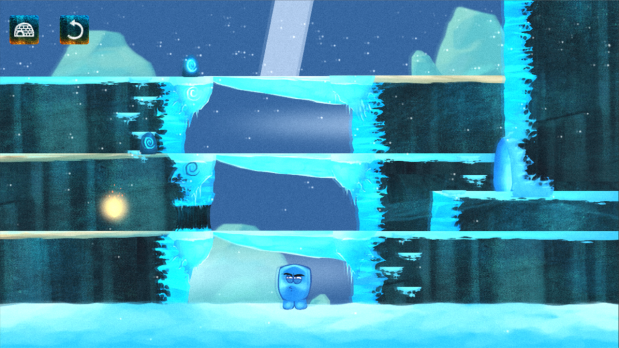An Emotional Relationship!

Flappy birds!!! What an annoying game, it’s rare to find someone who scored 10.It lacks playability which leads to player frustration and the game must be a failure. Is flappy birds a failure?? That will be a big NO!!! Because people loved (or hated) it, which made it extremely popular!!
Haven’t we played and enjoyed games even though they had bugs? Haven’t we tried to score much as we can in flappy birds so we can brag about it with friends? Haven’t we felt the increase of our heart beat with the beat of the super mario background music while we are reaching the time limit and haven’t we failed to do a simple task which we did pretty good with the normal background music?
So what’s going on, clearly we were missing something in the design principles and clearly we have an emotional relationship with games. Don Norman discusses about these things throughout his book “Emotional Design”.
As Norman says “The result is that everything you do has both a cognitive and an affective component—cognitive to assign meaning, affective to assign value. You cannot escape affect: it is always there. More important, the affective state, whether positive or negative affect, changes how we think”. So it’s clear that we need to consider about emotional design without just designing working and playable stuff. And it’s even ok to make stuff that are not working well , if I put it in Normans own words he says “Attractive things do work better—their attractiveness produces positive emotions, causing mental processes to be more creative, more tolerant of minor difficulties”
The Bond!

Yes, we tap, we tilt, we shake, we shout, sometimes we even put our tongs out when we are playing a game!!So how do these bonds created, with a virtual world? Norman discusses about three design levels which makes the bond.
Visceral design > Appearance
Behavioral design > the pleasure and effectiveness of use
Reflective design > Self-image, personal satisfaction, memories
Why do like to taste sweet tastes rather than bitter tastes (unless they are acquired tastes)? We don’t know but we do. This happens because of the preprogrammed layer which is the visceral level of our brain. Visceral design is about the appearance of a game, the touch and feel.
Anyone can easily play and earn good scores without draining the battery in Subway surfer, and we can very easily share our high scores on FB as well!!That’s why most of us love Subway surfer. We’re very satisfied with its playability, performance, and functionality hence we are satisfied with the behavioral level of the game.
Even with the frustration, we play Flappy bird to impress our friends, when we complete a puzzle game we feel smart and we’ll keep on impressing our selves by continuing the game. This is because of the reflective level bond that we have created with the game. As Norman describes “It is only at the reflective level that consciousness and the highest levels of feeling, emotions, and cognition reside. It is only here that the full impact of both thought and emotions are experienced. At the lower visceral and behavioral levels, there is only affect, but without interpretation or consciousness. Interpretation, understanding, and reasoning come from the reflective level.”
Control The Feelings!

As game designers we must control how the players feel, because the player experience is dependent on his/her feeling. Same game play will result different experiences depending on the mood of the player.
For many years nature has fine tuned us through evolution. As a result we are very sensitive to the emotional signals from the environment and our visceral level is very good at interpreting those signals automatically. As game designers we must take advantage from the visceral level.
For instance if we are working with a puzzle game it’s better to use colors and audio in a way to make the player feel more relaxed because a relaxed mind is creative and is good at problem solving. So the environment will help the player to solve the puzzle without frustration. And if we are creating a shooter game it’s ok to use disturbing sounds and blinking life level bars to make a more stressful environment because stressed mind is more focused, so the environment will not make the game boring.
It’s Alive!!
We felt sad for poor “Om Nom” when we couldn’t cut the rope and feed it with candy. We almost treat “Om Nom” as a living creature even though it only has few facial expressions and sounds. What would happen if we replace the birds in angry birds with spheres and pigs with cubes? As Norman says in his own words “We are social creatures, biologically prepared to interact with others, and the nature of that interaction depends very much on our ability to understand another’s mood. Facial expressions and body language are automatic, indirect results of our affective state, in part because affect is closely tied to behavior.”
Anthropomorphism is interpreting the things we experience in human terms. As game designers we should take advantage of anthropomorphism, because players tend to build anthropomorphic relationships with objects inside the games. Even though anthropomorphism can bring positive impacts it can also result a negative impact. Computer rage is an example of negative impact of the anthropomorphism. As game designers if we are intentionally giving life to game objects we must be careful to earn and retain the trust of the player. Pure reasoning logic isn’t always enough to describe a living thing for example what happens when there isn’t enough information therefore we must add personality to these objects.
Did You See That!!

We play flappy birds to show/see how good we are in flapping without hitting on pipes. Even though it has a frustrating game play we continue on playing. That’s because our reflective level takes over our behavioral level.
We play “The room” for the feeling of accomplishment .We like to feel smart, we like to be appreciated, and that’s our nature. That’s where social networks fit in with games. If you feel accomplished you will share your high scores with the society. So as game designers we must also take use of social networking in our games.
I Want It!! I Love It!!

As statistics show 80% of app store downloads are organic downloads. This reminds us how we downloaded some games saying WOW!! I want it!! .Designers calls this the “wow” factor. As Norman says: “Because visceral design is about initial reactions, it can be studied quite simply by putting people in front of a design and waiting for reactions. In the best of circumstances, the visceral reaction to appearance works so well that people take one look and say “I want it.” Then they might ask, “What does it do?” And last, “And how much does it cost?” This is the reaction the visceral designer strives for, and it can work.”
Once we download it, we start playing. We start learning the basic moves, if the designer was good enough to retain and match our conceptual model, we will even start playing without following a tutorial. Norman discusses about three types of conceptual models as the designer’s model, the system image, the user’s model. For player to understand the game his user’s model must match with the game designers design model. The communication of the game designer and the player takes place through the system image or the game.
OK, now that we have started playing. If the game is good, we will start to trust it. As Norman states trust implies reliance, confidence, and integrity. Because we don’t have think about the functionality we start to enjoying the play. In order to continue playing design must have a “flow”. Flow is term from renowned social scientist Mihaly Csikszentmihalyi. Norman explains: “flow state is a special, detached state of consciousness, in which you are aware only of the moment, of the activity, and of the sheer enjoyment”. In order to create the flow in a game, the game play must match the player skill level adding enough challenge to make the play continuing. If the game is too challenging it’ll become frustrating, if it’s too easy the game will become boring. Jenova Chen’s famous “flow” is an excellent application of the Mihaly Csikszentmihalyi’s flow.
When we continue playing eventually the game becomes less interesting. Adding a little surprise can spice up the game play. As Norman explains: “Scientists have shown that the biggest responses always come with the least expected event. A simple sentence such as, “He picked up the hammer and nail” gives a tiny response; change the last few words, “He picked up the hammer and ate it,” and you’ll see a much larger one”. Beauty of most things diminishes with familiarity. But if the game designer has made the things more dynamic, the game will have a longer lifetime.
As game designers, if we want to make a good game we must balance visceral level, behavioral level and reflective level. But if flappy bird designer thought about balancing these levels there wouldn’t be flappy birds. As Norma explains: “Perfectly “user-centered design” would be disturbing as well, precisely because it would lack that artistry”. Norman finishes the chapter on Three Levels of Design by saying “If you want a successful product, test and revise. If you want a great product, one that can change the world, let it be driven by someone with a clear vision. The latter presents more financial risk, but it is the only path to greatness.”
Read Don Norman’s “Emotional Design”
Thanks http://iconka.com/cat-power/ for these nice cats
 This animation doesn’t use any principles other than moving in a arc.
This animation doesn’t use any principles other than moving in a arc. + waits before the second movement (Staging)
+ waits before the second movement (Staging) + second movement function is replaced with the smooth step function (Slow In and Slow Out)
+ second movement function is replaced with the smooth step function (Slow In and Slow Out) + a squash animation is scripted before the second movement (Anticipation)
+ a squash animation is scripted before the second movement (Anticipation) + a squash and stretch animation is scripted on the end of the first movement (Squash and Stretch)
+ a squash and stretch animation is scripted on the end of the first movement (Squash and Stretch) + a rotation animation is scripted to the end of the second movement (Follow Through and Overlapping Action)
+ a rotation animation is scripted to the end of the second movement (Follow Through and Overlapping Action) + a squash and stretch values increased and a stretch is scripted in to the second movement (Exaggeration)
+ a squash and stretch values increased and a stretch is scripted in to the second movement (Exaggeration)







